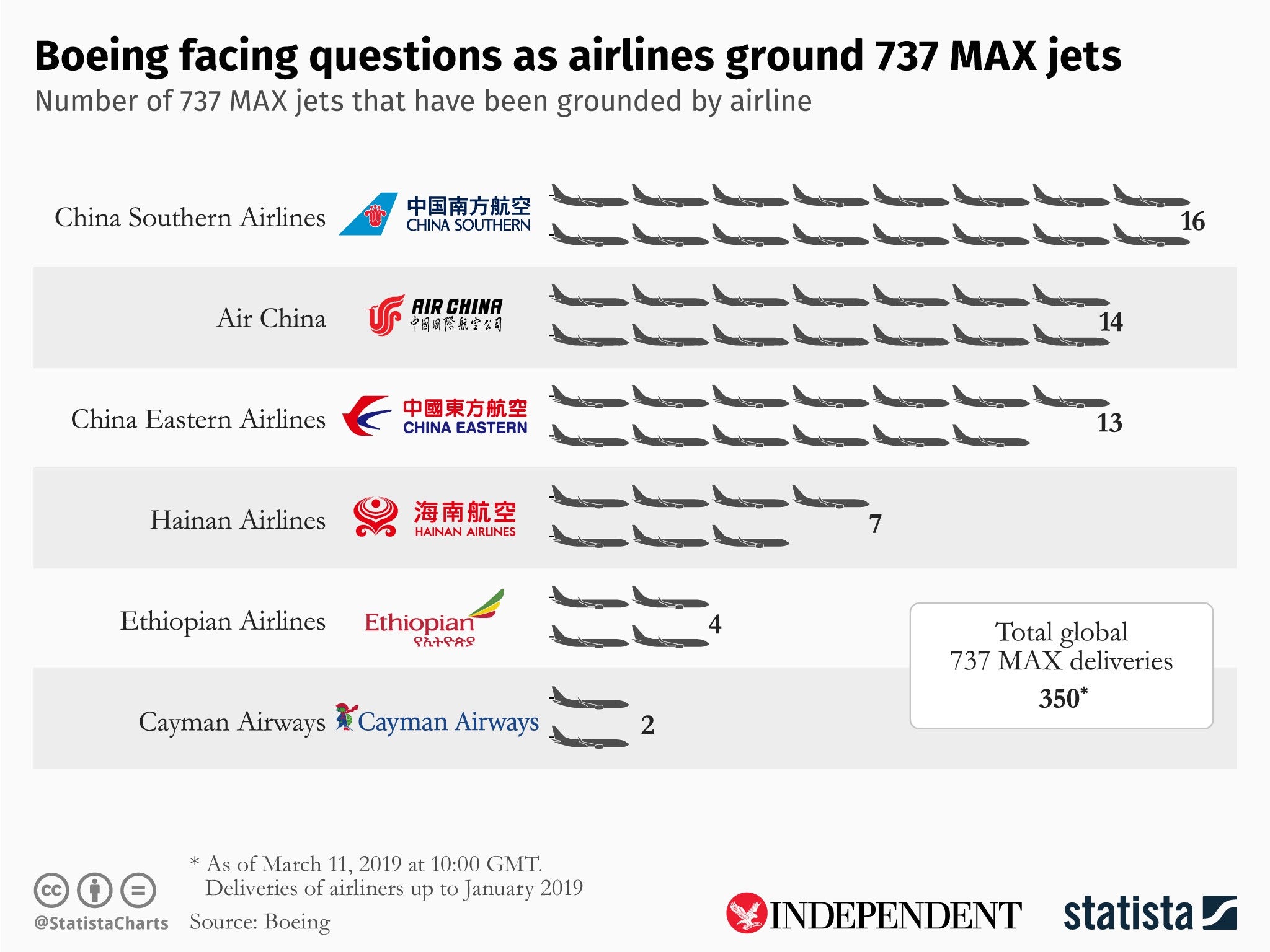Ethiopian Airlines crash: Concerns grow over Boeing 737 Max's anti-stall protection
‘Nose down’ software implicated in Lion Air crash in 2018
Your support helps us to tell the story
From reproductive rights to climate change to Big Tech, The Independent is on the ground when the story is developing. Whether it's investigating the financials of Elon Musk's pro-Trump PAC or producing our latest documentary, 'The A Word', which shines a light on the American women fighting for reproductive rights, we know how important it is to parse out the facts from the messaging.
At such a critical moment in US history, we need reporters on the ground. Your donation allows us to keep sending journalists to speak to both sides of the story.
The Independent is trusted by Americans across the entire political spectrum. And unlike many other quality news outlets, we choose not to lock Americans out of our reporting and analysis with paywalls. We believe quality journalism should be available to everyone, paid for by those who can afford it.
Your support makes all the difference.Investigators into the deadly plane crash near Addis Ababa will urgently analyse the flight data recorder and cockpit voice recorder to try to discover what caused the loss of the Ethiopian Airlines jet.
All 157 passengers and crew onboard died when the Boeing 737 Max 8 hit the ground at high speed shortly after takeoff from the capital of Ethiopia on Sunday morning.
Investigators are considering a wide range of possible causes for the loss of flight ET302, from mechanical malfunction to a criminal act.
But with dozens of Boeing 737 Max aircraft grounded in Ethiopia, Indonesia and China, attention is growing on the anti-stall protection that the manufacturer has deployed in its most modern twinjets.
Fluctuations in the vertical speed of the aircraft in the Ethiopian incident show some similarities with the performance of the Lion Air 737 Max 8 which crashed shortly after takeoff from Jakarta airport in October.
All 189 people onboard the Indonesian domestic flight perished when the plane plunged into the sea.
The Max version of the world’s most commercially successful aircraft has its engines further forwards and higher than on earlier variants.
That shift has aerodynamic consequences. When Boeing was developing the Max, it introduced some software – known as the “Maneuvering Characteristics Augmentation System” – as a safety measure.

The aim is to protect against stalling. One of the most fundamental elements in aviation is the “angle of attack”, which measures the angle between the wing and the airflow. If it increases beyond a certain point, then the lift produced by the wings is insufficient to keep the aircraft flying.
Boeing’s stall-protection measure is designed to respond when the angle-of-attack sensor indicates danger.
It will automatically nudge the nose downwards, by operating an elevator in the tail, even if the pilots are flying manually rather than on autopilot.
The pilots are then expected to take action to address the potential stall issue.
But an emergency airworthiness directive issued by the US Federal Aviation Administration (FAA) shortly after the Lion Air crash warned: “If an erroneously high single angle of attack sensor input is received by the flight control system, there is a potential for repeated nose-down trim commands of the horizontal stabiliser.
“This condition, if not addressed, could cause the flight crew to have difficulty controlling the airplane, and lead to excessive nose-down attitude, significant altitude loss, and possible impact with terrain.”
The directive ordered airlines to advise pilots about how to deal with the phenomenon should it arise.
The FAA said the issue “is likely to exist or develop in other products of the same type design”.
Many pilots have expressed concern that Boeing had failed to communicate what they see as a very significant change to the way the 737 flies.
Dennis Tajer, a spokesperson for the American Airlines pilot union and a 737 captain, told The New York Times: “We’re not far off the time when we were being told that new equipment on the Max wasn’t disclosed. We have that memory to work with.” He said it was too early to draw any conclusions about the loss of ET302, but added: “Boy, are we watching.”
In a statement, Boeing said: “We extend our heartfelt sympathies to the families and loved ones of the passengers and crew onboard and stand ready to support the Ethiopian Airlines team.
“A Boeing technical team will be travelling to the crash site to provide technical assistance under the direction of the Ethiopia Accident Investigation Bureau and US National Transportation Safety Board.”

Join our commenting forum
Join thought-provoking conversations, follow other Independent readers and see their replies
Comments